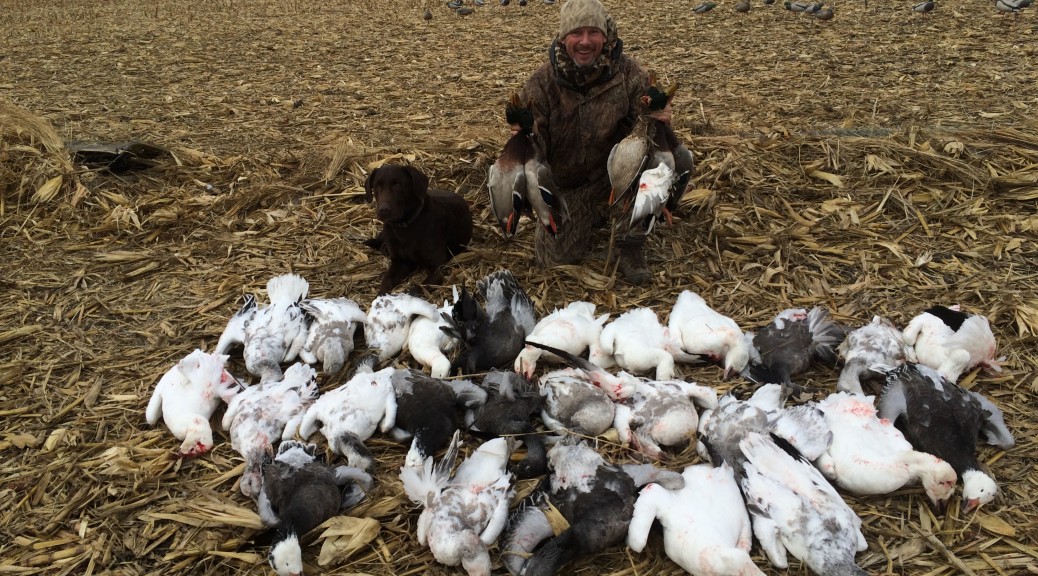Snow Goose Calling
Dozens of good goose calls are available, all of which are effective in the hands of a good caller. It’s helpful to listen to wild birds and try to imitate them with your calls. There are no better teachers. But unless you have a friend who is a skilled caller who can teach you, you also should purchase an instructional CD, DVD or audiotape that will allow you to hear the actual sounds of geese and good calling by practiced goose hunters. Study this and try to duplicate the sounds used for various situations. After some practice, record yourself on a tape recorder and decide for yourself if you’re good enough to start calling in the field. Listen for weaknesses in your repertoire, then practice to improve them.
Snow Goose Hunting Tips
There’s no such thing as a casual snow goose hunt, one reason many waterfowlers don’t participate. This sport requires large goose decoy spreads and constant scouting.
First, you must study movement patterns of geese where you want to goose hunt, then secure permission to hunt where concentrations are located. (Most hunting is on private hunting lands.) When geese start using a field, they stay until the food supply is exhausted. Being there after they’ve started using the field and before they’ve eaten it out is the trick.
Elaborate ground blinds are nice but not necessary because a goose field usually produces only one or two good shoots before geese move elsewhere. Many goose hunters simply lie on their backs in the goose decoys and wear white or camouflage-pattern clothing. Pit ground blinds, portable ground blinds and makeshift ground blinds made from natural materials on-site also can be used, depending on where you hunt.
When it comes to snow goose decoy spreads, bigger usually is better. The decoys should be in place before sunrise to take advantage of the snow goose’s propensity for flying early.
The most important thing goose hunters should remember is to remain well hidden and motionless until birds are well within shooting range. Snow geese are wary, and if they see or hear anything out of place, they’ll avoid it. If approaching birds seem reluctant to land, flare off at the last minute or land consistently outside the decoys, chances are they are spotting the blind, hunter movement or something else that makes them nervous. Adjust as necessary.
Avoid the temptation to shoot when the first geese start dropping into your set-up. Veteran waterfowlers hold off until the lead geese are touching down and geese in the rear of the flock are well within gun range before making their move.
Remember this rule of thumb as well: If, when aiming, the end of your gun barrel covers more than half the bird, the goose is beyond 45 yards and is too far away for a clean kill.
If you’re not up to the tasks just outlined, consider hiring a hunting guide. These guys can show you the ins and outs of snow goose hunting, and after you’ve experienced a hunt first-hand, you’ll know whether you really want to make the required investment in time and hunting equipment to hunt on your own. Best of all, hunting guides do all the work. The hunter need not spend hours scouting, gaining hunting permission, and setting and retrieving goose decoys. For a reasonable fee, reputable hunting guides do all this and clean and pack your birds, too.
Snow Goose Hunting Conclusion
Snow goose hunting is challenging, for sure. Nevertheless, it’s a sport many of us find irresistibly attractive. Goose hunting allows us to perfect our skills with a shotgun and to go afield with men we enjoy and admire. Most of all, it gives us another excuse to be outdoors. Until you have sat in a goose spread and watched a fall or winter day unfold, develop and decline, you have missed one of life’s greatest pleasures.
























You must be logged in to post a comment.